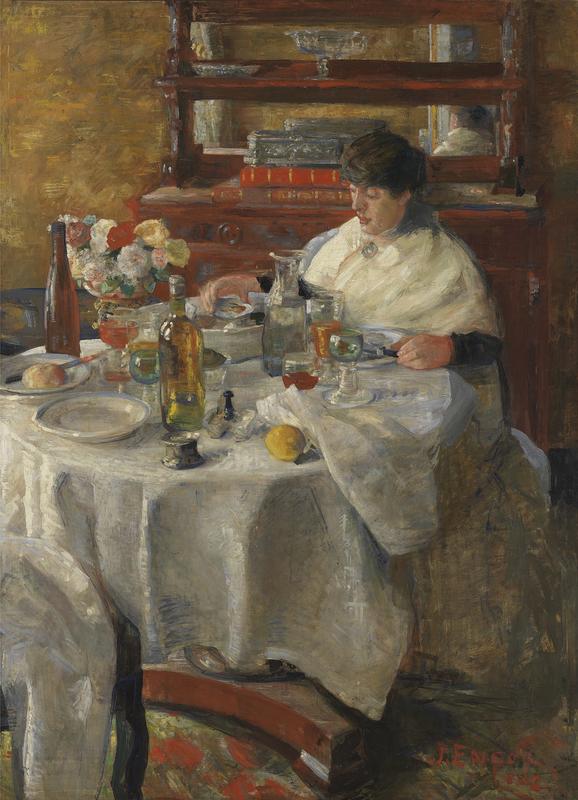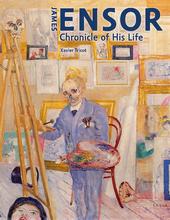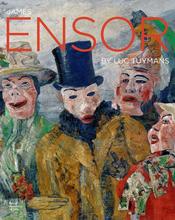More about The Oyster Eater
- All
- Info
- Shop

Contributor
In 19th-century Belgium, The Oyster Eater wasn’t a reputed member of gastronomical circles.
And if this person was a woman, oh boy! You’d hear the bourgeoisie frantically scratching their eyes out from miles away. I would be lying if I said that they wouldn’t be caught dead eating oysters. They ate them oysters, they all did.
Ostend, where James Ensor grew up, had the best oysters in the country. It was a delicacy, a sign of opulence. However, a woman partaking in such fineries, by herself, was unheard of. Why? Because oysters were about sex. It was both an aphrodisiac and bore a strong resemblance to lady parts. For Belgium, this was almost porn. She may as well have been masturbating.
The Antwerp Salon rejected James Ensor’s painting in 1882, citing irregularities in “form”. “...the bottom right-hand corner receded into sketchlike abstraction”, critics guffawed. James didn’t like that. These traditional art circles were giving him a hard time. He was still selling his paintings, just not the rebellious ones. This rejection led to the creation of the notorious group of Belgian artists who called themselves Les XX.
The Oyster Eater was painted way before Ensor got into masks. He got his sister Mitche to pose for him. I cannot say if she was happy with the unflattering portrayal, but James didn’t care as long as he looked good. That didn’t go exactly as planned. The Antwerp Salon made him feel like sh*t.
This was the largest painting in a series of staged scenes from the homes of the rich and fabulous. Ensor called it the Bourgeois salon. He painted the series at his family home in Ostend. The family had known money, but at this point, wealth wasn’t their friend. James and his family borrowed and leased furniture to set the stage for his paintings. He may have been trying to woo the top brass at the salon. We all know how that turned out.
Ensor’s Oyster Eater is one with the table. She devours its contents off herself. I’m seeing a dress that doubles as a tablecloth that lets you dine anywhere and everywhere. It doesn’t sound like a bad idea. I’d be willing to invest.
Sources
- Cheney, Liana. "The Oyster in Dutch Genre Paintings: Moral or Erotic Symbolism." Artibus Et Historiae 8, no. 15 (1987): 135-58. doi:10.2307/1483275
- Gural, Natasha. "Unmasking James Ensor." Forbes. June 19, 2013. Accessed June 30, 2019. https://www.forbes.com/2009/07/07/moma-exhibit-painting-masks-opinions-…
- "Religious Theme." Religious Theme | James Ensor. Accessed June 30, 2019. http://jamesensor.vlaamsekunstcollectie.be/en/research/webpublications/…
- "James Ensor." Musée D'Orsay: James Ensor. February 07, 2008. Accessed June 30, 2019. https://www.musee-orsay.fr/en/events/exhibitions/in-the-museums/exhibit…
- Canning, Susan M. “Between the Studio and the Salon: The Intimate Theatre of James Ensor’s Interiors” (2018). Dix-Neuf. 22:3-4, 222-244. DOI: 10.1080/14787318.2019.1586320
Featured Content
Here is what Wikipedia says about The Oyster Eater (Ensor)
The Oyster Eater is an oil painting executed in 1882 by the Belgian Expressionist artist James Ensor which is now in the collection of the Royal Museum of Fine Arts, Antwerp.
The genre work depicts the artist's sister Mitche eating oysters on her own at a well-appointed table replete with flowers, plates, wine and table linen. Although painted in an impressionist style Ensor himself disassociated himself from the French movement. Whilst in agreement with them that light and colour were more important than line, for him light in particular had an almost spiritual value.
However the painting was refused by the Antwerp Salon of 1882, possibly because of the sexual overtones suggested by a single young woman eating oysters, then considered an aphrodisiac. In this respect the painting can be compared with Jan Steen's salacious The Oyster Eater of 1680. When also rejected by the alternative exhibitors l'Essor the following year, Ensor and his associates were provoked into establishing their own group, Les XX, to hold their own exhibitions of avant-garde works.
Check out the full Wikipedia article about The Oyster Eater (Ensor)














